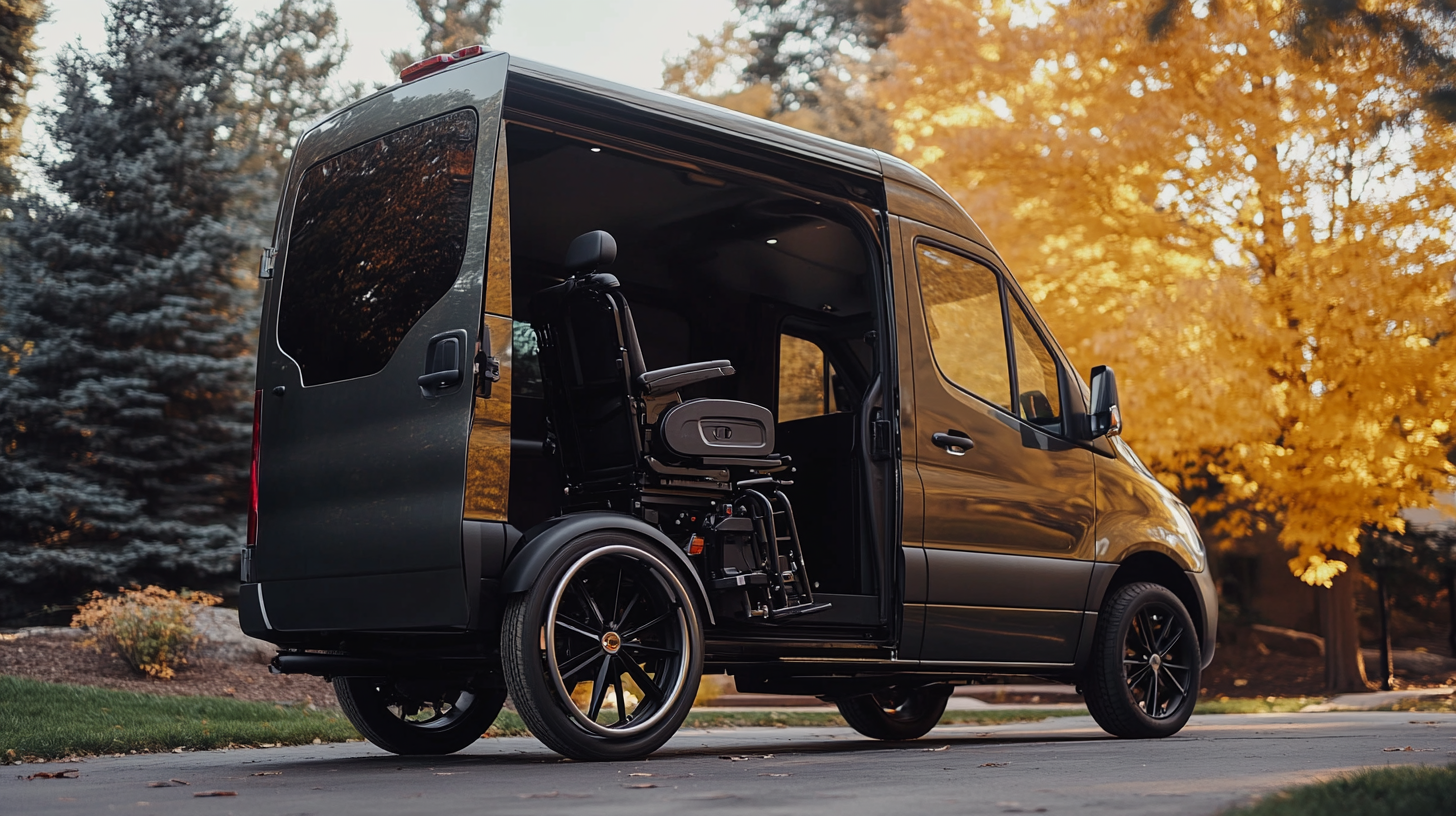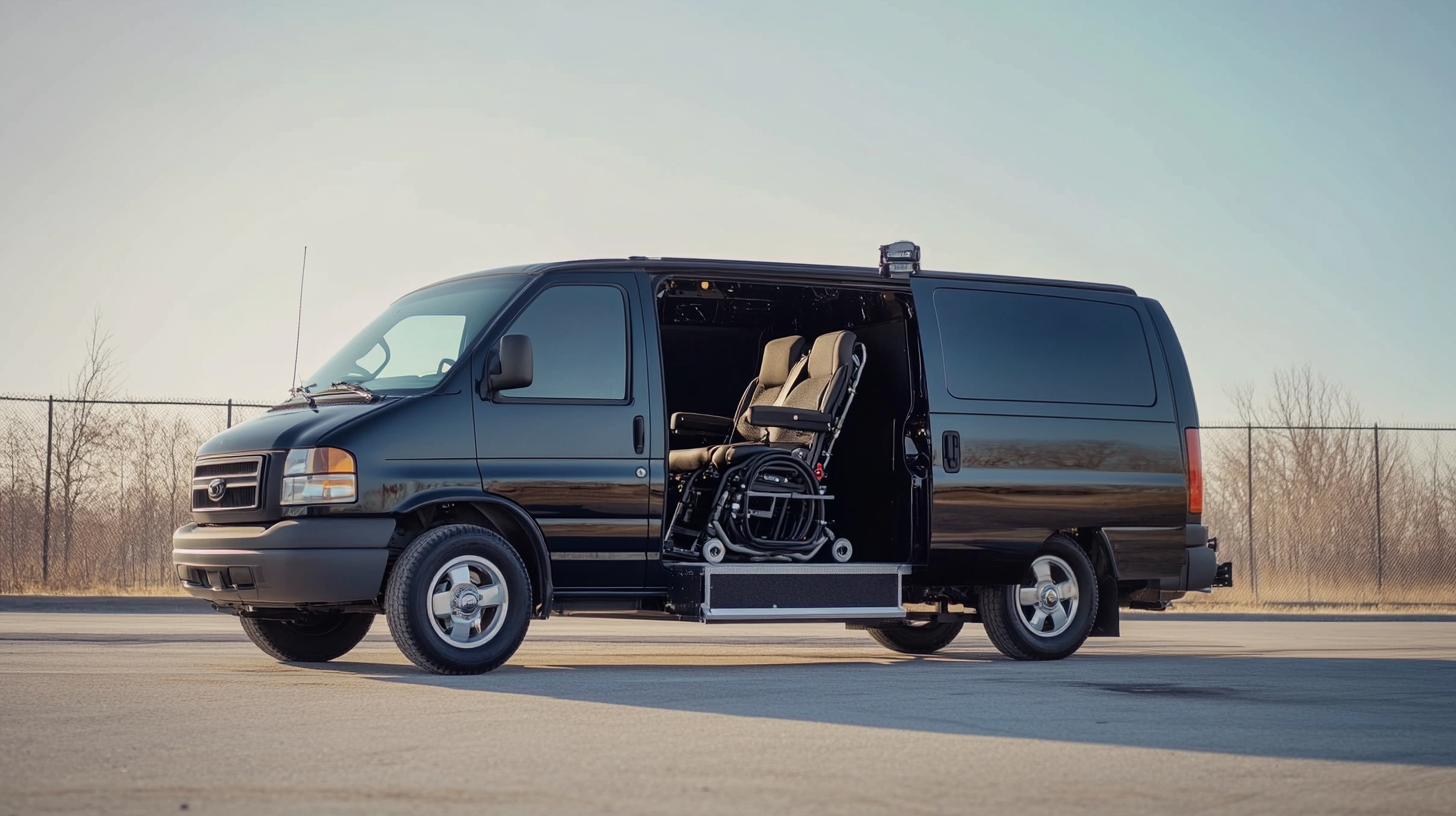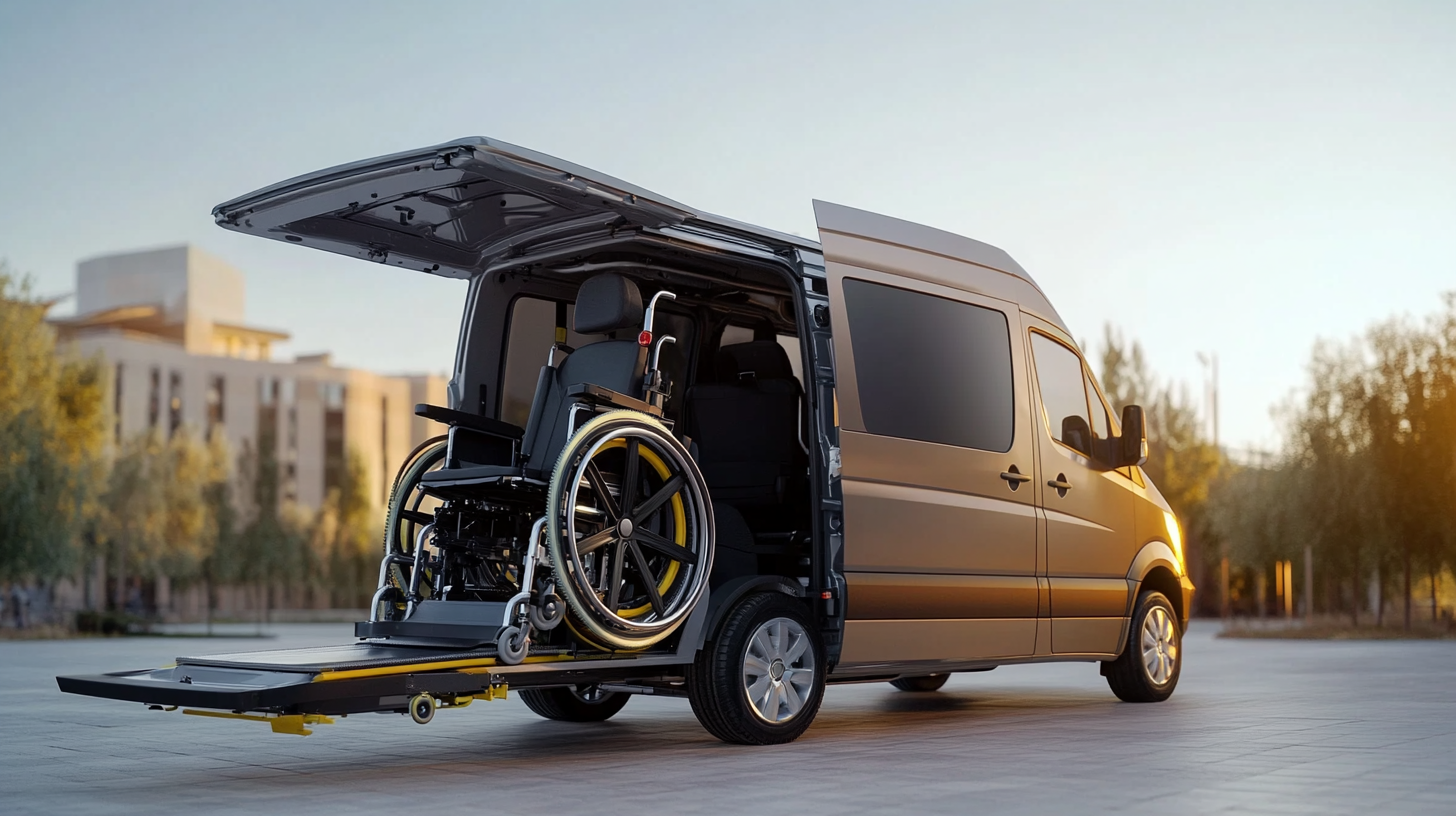Innovative Features of Wheelchair Vans Transforming Accessibility in Transportation
In recent years, the transportation landscape has undergone a remarkable transformation, largely thanks to the innovative features of wheelchair vans. These specialized vehicles are meticulously designed to meet the needs of individuals with mobility challenges, ensuring they have equal access to transportation. As society becomes more aware of the importance of inclusivity, wheelchair vans are at the forefront of enhancing the overall experience for passengers, making it easier to navigate the world around them.
The advancements in wheelchair van technology not only focus on functionality but also prioritize comfort and safety. From advanced ramp systems to customizable interiors, these vehicles are revolutionizing the way people with disabilities engage with their environment. This blog will explore the innovative features that are reshaping accessibility in transportation and highlight how wheelchair vans are breaking down barriers, offering both independence and dignity to users.

Revolutionizing Mobility: The Role of Wheelchair Vans in Modern Transportation
The role of wheelchair vans in modern transportation is undergoing a significant transformation, addressing long-standing accessibility gaps in urban mobility. Reports indicate that approximately 1 in 4 adults in the U.S. has some form of disability, highlighting the critical need for reliable and accessible transportation solutions. Innovative wheelchair vans are at the forefront of this movement, equipped with features designed to enhance comfort and ease of use for passengers with mobility challenges.
Recent advancements such as push-button ride-hailing services are redefining how individuals with disabilities navigate city environments. These developments have simplified the process of securing a ride, making transportation more approachable and less time-consuming. Partnerships between service providers and community organizations are increasingly focused on overcoming the barriers faced by people with disabilities, emphasizing the importance of dependable transportation for maintaining independence and overall health.
Furthermore, emerging manufacturers are producing purpose-built vehicles tailored to meet the unique needs of wheelchair users. These innovations not only improve the quality of rides but also ensure a safer and more enjoyable experience for all passengers. From adjustable seating configurations to enhanced safety features, modern wheelchair vans represent a significant leap forward, making urban mobility more inclusive and accessible.
As cities continue to grow and evolve, the integration of innovative wheelchair vans into public and private transportation systems will play a crucial role in fostering greater mobility for all residents. This transition is not just a matter of convenience but a necessary step toward ensuring that individuals with disabilities can fully participate in their communities.

Cutting-Edge Design: Key Features Enhancing Wheelchair Van Accessibility
The evolution of wheelchair vans has enabled a new standard of accessibility in transportation, putting cutting-edge design at the forefront. These vehicles integrate advanced features that cater specifically to the needs of wheelchair users, ensuring a seamless journey. One of the most significant innovations lies in the ramp technology. Modern vans now boast automatic folding ramps that deploy with the touch of a button, offering a smooth transition for passengers from curb to cabin. This enhancement not only simplifies access but also provides an added layer of safety.
Another key feature revolutionizing the experience of traveling in a wheelchair van is the interior design, which prioritizes spaciousness and comfort. Manufacturers have implemented wider door openings and enhanced headroom, making it easy for users to maneuver without feeling confined. Additionally, some models include adjustable seating arrangements that can accommodate various needs, whether it be transporting multiple passengers or providing a more comfortable layout for someone traveling solo. Furthermore, the customization options available allow users to personalize their vans, ensuring their specific requirements and preferences are met.
Technology also plays a crucial role in enhancing accessibility. Many wheelchair vans are now equipped with cutting-edge infotainment systems that offer hands-free controls and voice activation. These features enable users to adjust climate controls, navigation, and entertainment options without needing to divert their attention from the road. The integration of smart technology not only improves usability but also contributes to a safer driving experience for all passengers. As innovation continues to drive the development of wheelchair vans, accessibility in transportation will keep evolving, offering more freedom and independence to those who depend on it.

Technology Integration: Smart Solutions for a Seamless Travel Experience
The integration of advanced technology into wheelchair vans is revolutionizing the way individuals with mobility challenges experience transportation. From automated ramps to state-of-the-art navigation systems, these innovations are designed not just for convenience, but to ensure a seamless travel experience for all passengers. Smart sensors detect obstacles and assistance requirements, allowing for effortless entry and exit, while adaptive controls provide drivers with easy access to essential functions.
Incorporating smartphone applications further enhances accessibility. Users can schedule rides, track vehicle location, and communicate with drivers through their devices, removing many barriers previously faced in public transportation. These apps also provide feedback on the vehicles' performance and reliability, ensuring peace of mind for users and their families. By streamlining these processes, technology empowers passengers with greater independence and confidence in their travel choices.
Moreover, some wheelchair vans are now equipped with entertainment systems and connectivity features that cater to both comfort and engagement during journeys. High-quality audio and video systems create a pleasant environment, while charging stations and Wi-Fi allow passengers to stay connected, transforming what used to be a frustrating experience into one of enjoyment and ease. As these technological advancements continue to unfold, the future of accessible transportation looks promising, paving the way for increased inclusivity in everyday travel.

Safety First: Innovations in Wheelchair Van Design for Passenger Protection
Innovations in wheelchair van design have made significant strides in ensuring passenger protection, primarily focusing on safety enhancements that cater to the unique needs of wheelchair users. According to a 2021 report from the National Highway Traffic Safety Administration (NHTSA), individuals with disabilities are involved in nearly 25,000 traffic accidents annually, underscoring the critical nature of safety features in wheelchair vans. One major innovation is the introduction of advanced restraint systems designed to secure wheelchairs more effectively during transit, minimizing movement and enhancing passenger stability.
Additionally, many manufacturers are now incorporating crash-tested seating systems and reinforced structures to improve overall protection levels. The Rehabilitation Engineering and Assistive Technology Society of North America (RESNA) states that modern wheelchair vans often utilize stronger, lightweight materials that not only reduce the risk of injury but also improve the vehicle's overall performance. This focus on creating a safe environment extends to the integration of features such as anti-lock braking systems and lane departure warnings, which are increasingly being included in the design of new vans, ensuring that safety is a top priority for both drivers and passengers.
Furthermore, advancements in technology have led to the development of smart sensors that provide real-time feedback on the status of safety restraints. This innovation not only enhances the effectiveness of securing wheelchairs but also empowers passengers and caregivers to ensure proper setup before journeying, thus fostering a culture of safety and awareness. As wheelchair vans continue to evolve, the commitment to passenger protection through innovative design remains a driving force in achieving greater accessibility in transportation.
Empowering Independence: How Wheelchair Vans Expand Opportunities for Users
The evolution of wheelchair vans is a significant milestone in promoting independence for individuals with mobility challenges. According to data from the National Highway Traffic Safety Administration (NHTSA), an estimated 3.6 million Americans rely on wheelchairs for mobility, making it crucial to enhance transportation options. Wheelchair vans equipped with innovative features not only offer improved accessibility but also empower users to engage more fully in their communities.
One of the groundbreaking advancements in wheelchair vans is the integration of automated deployment systems. These systems facilitate easy access for users with minimal assistance, allowing for a seamless transition from wheelchair to vehicle. Research conducted by the National Center for Mobility Management highlights that accessible transportation options contribute to a 70% increase in community participation among wheelchair users. Such statistics showcase the profound impact that ergonomic designs and advanced technology are having on the quality of life for these individuals.
Moreover, modern wheelchair vans are designed with versatility in mind. Many models now offer customizable interiors, accommodating various types of wheelchairs and mobility devices. This customization not only enhances comfort but also ensures that users feel a sense of ownership over their transportation choices. A report from the Rehabilitation Engineering and Assistive Technology Society of North America (RESNA) indicates that personalized adaptive vehicles can increase user confidence by up to 65%, reinforcing the importance of tailored solutions in promoting independence.
As wheelchair vans continue to innovate, they play a pivotal role in expanding opportunities for individuals with mobility needs. By breaking down barriers to transportation, these vehicles not only fulfill a practical necessity but also inspire a broader societal shift towards inclusivity and accessibility for all.